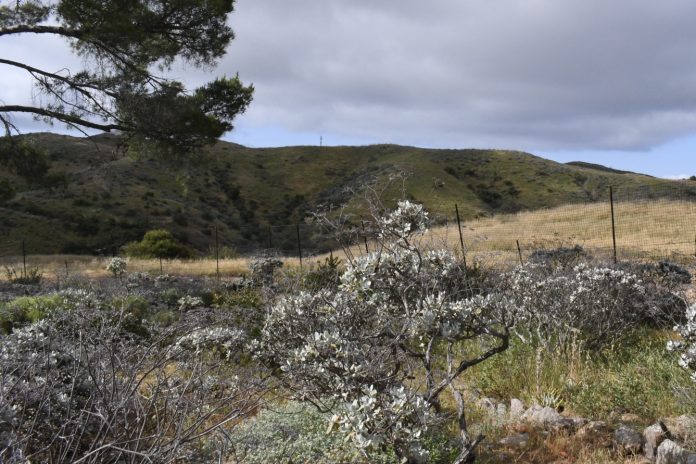
What we learned and what has changed in 13 years
This week marks 13 years since the Catalina Island fire of May 10-15, 2007.
It was a difficult time on the island. “We had no electricity for 10 days and no phones for six weeks,” said Mark Serratt, camping facilities manager for Boy Scouts of America’s Greater Los Angeles Area Council. “There was one place in the isthmus where a few phones worked, so people would meet up there and share phones.”
The island, and its #AvalonStrong people, have come a long way in the past 13 years. There has been a marked effort to prioritize communication since the incident.
“We always kept track of numbers, but now we really know how many people there are and exactly where they’re at,” added Serratt. He’s also seen places enhance their disaster preparedness, remarking that now the camp has enough stores to feed 300 people for three days.
“In an emergency, you quickly learn what details you don’t know,” said Catalina Island Conservancy President and CEO Tony Budrovich. As the camps tightened their communications and tracking so did the Conservancy. Hiking permits, which had always been required, became vital. “It showed the value of knowing exactly how many people were on the land.”
Of course there were natural changes as well. The fire caused damage to about 10 percent of the island, or approximately 4,800 acres. Swaths of invasive grasses burned, and the years of drought that followed led to a decrease in the deer population at the time.
“The native plant population was able to resurface, in a way,” said Budrovich, with the Conservancy adding native and endemic plants into the open landscape. The drought that followed, as well as predation by non-native animals, made for difficult work. “The fire directly led to why the Conservancy created exclosures. We needed to give native plants a chance.” Areas such as the Summit Vista garden, which was spared from the fire and has an exclosure fence, allow the chance to see what Catalina could look like without fire or ungulates like deer.
Fires are always of great concern to the entire Island. The 2007 incident, ignited by a spark from unapproved welding, led to new policies being set. Now, any open flame work on the Island requires a Conservancy ranger to be present.
“It’s a cost to us, but a safety benefit,” said Budrovich. “Some people don’t understand how delicate the Island is and that little things can make a difference.”
Ongoing fire mitigation work continues each year. The Conservancy works closely with the Los Angeles County Fire Department to follow all rules and regulations and is inspected each year. Regular brush clearance is a necessity, with more than 10 people working fulltime for two or more months of the year solely focused on clearing 100-200 feet around structures. The Conservancy recently received grants from Cal Fire and the Cal Fire Foundation to help purchase equipment allowing for more efficient brush clearance management.
“The County works with us on designations for fire clearance around roads and trails,” said Budrovich. “The unique nature of Catalina requires ongoing communications and a close partnership with these professionals to assess the best strategies for fire control.”
One of these strategies includes fire breaks. It is hard not to notice the bare streaks of land rising into the hills around Avalon, which have become more pronounced and continue further vertically since the 2007 fire. These breaks are maintained by the county, which requires permission from the Conservancy each year.
“We believe in safety first, so of course we allow for huge cuts of land as fire breaks” said Budrovich, adding that while the fire breaks may not reflect the natural growth of the Island, they play a vital role in mitigating potential damage in Avalon.
Take this week to look back at all of the progress made over the last 13 years, and the lasting impact and change created. In these trying times, it is important to remember that there can still be growth. With careful planning over the last 13 years, many plant species have bounced back and wildlife continues to thrive. May we all continue to thrive for many years to come.










